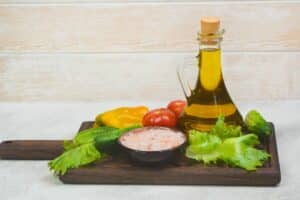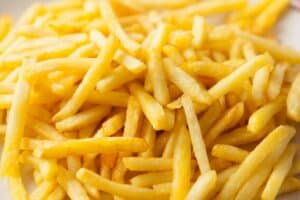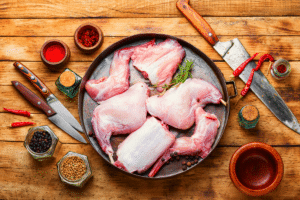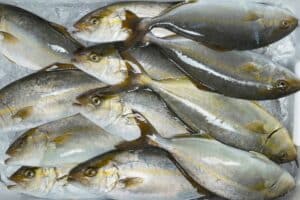Basil is one of the most popular herbs used when cooking in Italian cuisine. You can use it for many dishes, but sometimes you don’t have fresh basil.
Sometimes, you may need to try and substitute fresh leaves with dried, but how much should you use? That’s why we will answer your question regarding how much fresh basil is equal to how much dried?
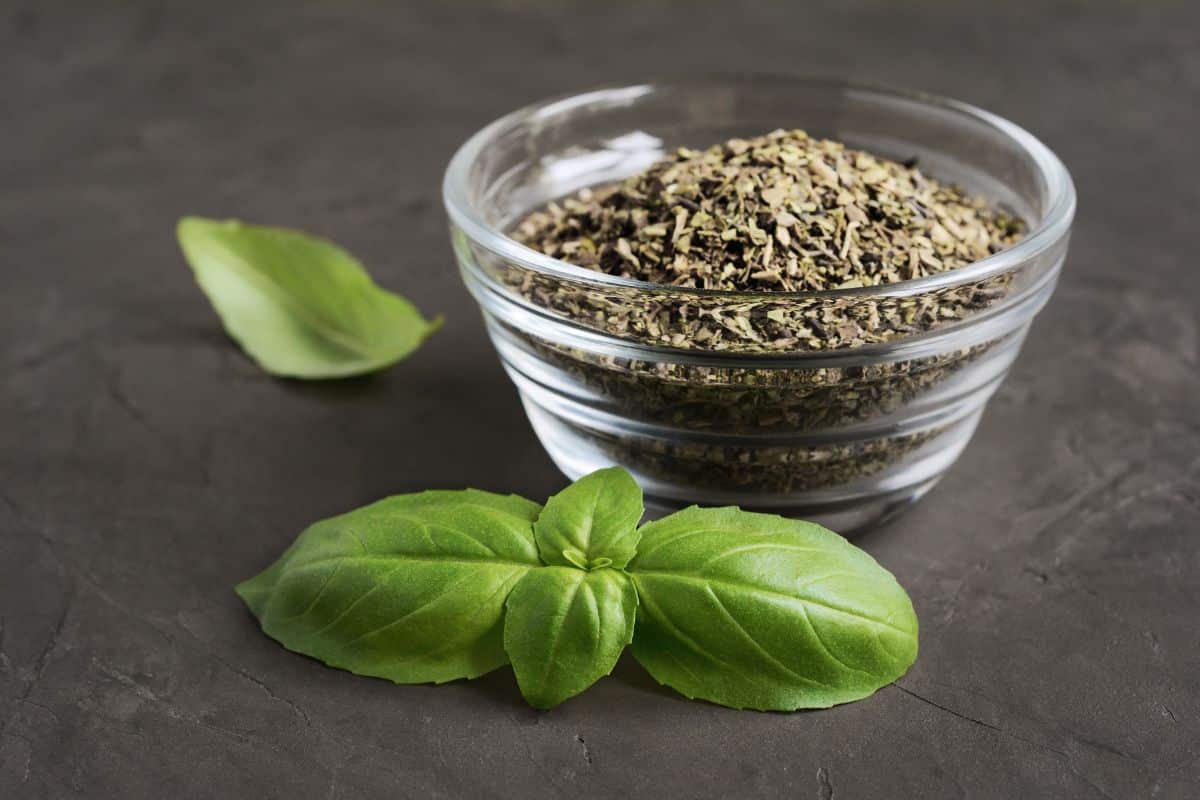
In this article, we will teach you everything there is to know about the different types of basil available and how you can measure it.
Whether you want to freeze, dry, or enjoy it fresh, by the end of this article, you will have no issues adding this to your dish. After all, basil is known for numerous health benefits that allow it to stand out as an amazing culinary herb.
How Much Fresh Basil Is Equal To Dried Basil?
If you want to know how much dried basil is equal to fresh basil, you need to remember a specific ratio. However, for simplicity, let’s say that you have a fresh cup of basil; if you have the dried equivalent, that would be ⅓ of a cup of fresh basil.
We’ll go into more depth regarding the different measurements to help you better understand how much you need depending on how much basil you want.
Remember, fresh and dried basil portions aren’t equal to dried basil compressed. Due to the compression of the dried basil, it has a far stronger flavor than you would expect from fresh basil. So, you’ll never need as much dried basil as you would fresh.
The Fresh Basil To Dried Basil Conversion Ratio
Knowing the conversion ratio of fresh to dried basil can help you identify what you need to flavor your dish. We recommend using the 3:1 ratio when you’re measuring the amount of basil you’ll need.
Below, we’ll include a number of common measurements to help you determine how much you need depending on the amount of basil needed for your recipe.
1 Cup Of Fresh Basil
We mentioned earlier that you would need ⅓ of a cup of dried basil to be equal to a whole cup of fresh basil.
This is the simplest measurement of how much fresh basil you need, but it can feel a little complicated when you want to measure smaller amounts of fresh basil.
½ Cup Of Fresh Basil
If you’re not one for dividing fractions, we have other methods to help you identify how much dried basil is equal to half a cup. The easiest way to think about this measurement is to consider that there are a little over 6 tablespoons in half a cup of fresh basil.
Using the 3:1 ratio, we can identify that half a cup should be 2 tablespoons of dried basil.
¼ Cup Of Fresh Basil
When you measure a quarter of a cup of fresh basil, you should identify how many tablespoons are in it, as we did before with half a cup of fresh basil.
When you measure a quarter of a cup with tablespoons, you’ll find that it holds 3 tablespoons. Thus, using the 3:1 ratio, we have calculated that the dried basil equivalent is 1 tablespoon.
⅓ Cup Of Fresh Basil
As we did before, measure your third of a cup via tablespoon. You’ll find there are a little over 4 tablespoons in a third of a cup of fresh basil. When you use the 3:1 ratio to find out how much this is, you’ll notice that the equivalent of dried basil is 1 ½ tablespoons.
Amount Of Dried Basil To Substitute For Fresh Basil
When you substitute basil, it’s best to adjust the measurements of a cup by finding out how many tablespoons are in it. You must then use the 3:1 ratio to find out how much dried basil you need.
This is because it will still have the same level of flavor. If you use the same amount of dried basil as fresh basil, you will have to contend with some extremely strong flavors that will overpower your dish.
Why Use This Ratio?
The reason you should use this ratio is to adjust the flavor accordingly. Fresh basil is roughly 80% to 85% water, while dried basil has all the water drained. Due to the loss of water, the flavor is far stronger than you would normally get from fresh basil.
About Basil
Basil is one of the most popular members of the mint family and one of the world’s famous culinary herbs. It’s especially popular in Mediterranean dishes. It’s also a warm-weather annual that you can grow outdoors when the weather is warm enough.
It is known for its aromatic leaves that are glossy, oval. They usually have smooth, slightly toothed edges, and they can be used fresh or dry.
You can easily grow basil in your own garden; however, not all types of basil. There are different varieties that flourish in different climates and thus have different flavors.
For example, lemon basil is most common in Asian dishes. Common basil is known for not being that fragrant and has a more pungent flavor.
Different Varieties Of Basil
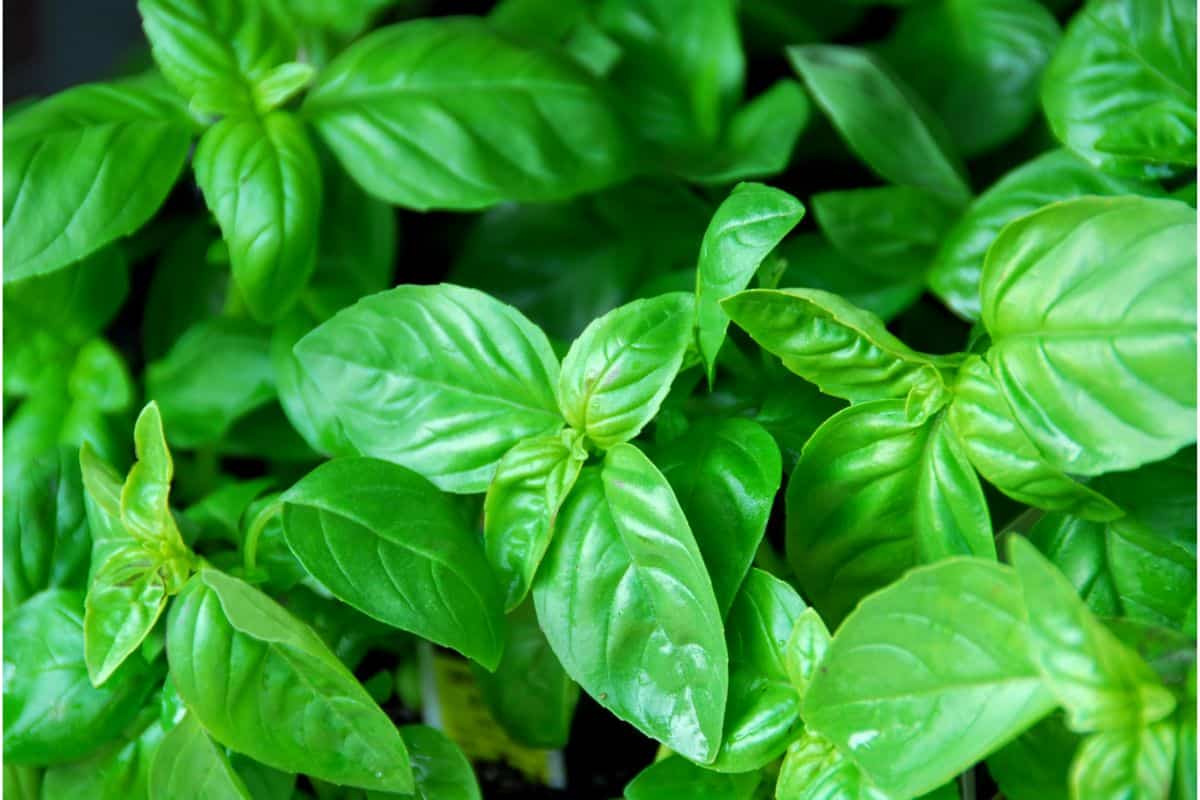
When you’re measuring basil, you should note that this ratio should work for all varieties of basil. But you may be wondering what these varieties are.
In this section, we’ll teach you everything you need to know about the different types of basil and how they differ in flavor from one another.
Cinnamon Basil
Cinnamon basil tends to grow on woodier plants and has a distinct flavor with a cinnamon touch. This makes them a sweet option for your dish.
It is known for having a warm flavor and aroma and is best used for sweet and savory dishes. Cinnamon basil is unique for its leaves that are both dark and light green and they have purple-red veins.
Holy Basil
Otherwise known as hot basil, this version is known for its peppery taste. It can be an interesting addition to spicy dishes. It is native to India and is commonly used for Indian medicine and herbal teas.
It is commonly used in Thai street and stir fry dishes as a culinary mint. However, you can also add it to fish sauce and chilies, especially to add flavor to meat, fish, or chicken.
Lemon Basil
Much like its name suggests, lemon basil has a lemony flavor that stands out among this particular brand of basil. However, it also has subtle hints of pepper and mint beneath the lemon.
It has grown in popularity for pesto dishes and offers a mild flavor to grilled fish and shrimp.
Purple Basil
Unsurprisingly, purple basil has been named for its appearance more than its flavor. In fact, you may be surprised to learn that purple basil has even won awards based on its distinct look.
Unlike other types of basil, we wouldn’t recommend cooking it as the leaves turn black when they are heated. However, you can puree it for pesto and add it to salads, as it tastes best fresh.
Sweet Basil
Of all types of basil, sweet basil is the most popular. With large green leaves, it’s known for its sweet flavor. However, that doesn’t mean that it doesn’t have subtle hints of other flavors, such as pepper, lemon, and mint.
It is known for being slightly spicy and has also been used for traditional medicines. If you want to find basil in stores, this will be the type that you are most likely to find.
Thai Sweet Basil
If you’re making an Asian dish, we recommend using Thai sweet basil. Its flavor has a hint of anise, making it a perfect addition to this type of cuisine.
While you can eat it raw, the leaves are best used in cooking as the leaves are particularly hardy. Thai sweet basil has leaves that don’t wilt as easily, unlike sweet basil.
How To Use Fresh Basil
Fresh basil is a staple ingredient in many dishes within the culinary world. It’s one of the main ingredients for pesto and has been used in a host of other dishes.
Frozen desserts have been known to have a hint of basil and are infused with various oils. In recent years, it’s become a common sight in healthy beverages such as smoothies too.
If you’ve never had basil, you may not be aware of the complex flavors it contains. Many people assume that greens are bland, but that’s not true when it comes to fresh basil.
You can taste hints of pepper, lemon, and mint in a single bite, making it a unique green and popular addition to meals.
That’s why, when you use fresh basil, we recommend cutting it from the plant and washing it. Once you wash the basil in cool water, you should leave it on a towel to air dry.
Once dry, remove the leaves from the stems, and throw them away as you will only need the leaves.
Freezing Fresh Basil
The good news is that if you don’t want dried basil immediately, you can always store it in a freezer. All you need to do is prepare it as you would normally. Put your basil in a colander and rinse it under cold water, and let it air dry on a towel.
When you dry it, you should lay the basil out on a flat surface, like a baking sheet, and then put it in the freezer. You can cut the stems before or after, but once frozen, we recommend putting your leaves in a zip-loc freezer bag.
You can then pull the leaves out whenever you need them without any significant changes to your recipe.
While this is the easiest way to freeze basil, alternative methods are also depending on your preference. Freezing basil is one of the easiest ways to store it and is often a more popular alternative to drying it.
Like dried basil, it is stronger than fresh basil as the leaves will already shrink due to the time spent in the freezer.
If you decide to freeze basil, you’ll be pleased to know that you can keep it fresh for longer than if you have fresh basil. You can store it in the freezer for at least 6 months, and it may last even longer.
How To Use Dried Basil
When you use dried basil, you don’t need to make any adjustments to how it’s used. When basil is dried, it’s likely that the leaves have already been removed from the stem. However, unlike fresh basil, you’ll want to use less as the flavor is much more concentrated.
You can use dried basil for the same types of dishes. However, you need to use less. Ideally, we recommend using dried basil for pesto and other frozen desserts. It is a wonderful seasoning but might not taste as good in beverages.
Despite the concentrated flavor, we should note that you might find the drying process will remove the mint in your basil.
Dry basil will also last longer than fresh basil, lasting anywhere from 6 months to 3 years. However, all herbs eventually expire, so you should keep an eye out for any fading color and favor to know if your basil has passed its use-by date.
Using Dry Basil In Place Of Fresh
Dried basil is the best substitute for fresh basil, so don’t be afraid to substitute it when you can’t get fresh basil. While you may need to calculate the difference in flavor, it’s better to choose dried basil as it will have the same flavor profile.
Substituting fresh basil for another herb may not work as well, as all herbs have different flavors. Basil is known for being distinct, so when you run out of fresh basil, grab some dried basil instead.
However, we wouldn’t substitute dry basil for fresh basil all the time. You should think about using it in the context of your dish. For example, dry basil is better as a seasoning.
Still, it’s not as good when it’s one of the key ingredients, as you may need to consider the texture of your basil.
How To Dry Fresh Basil
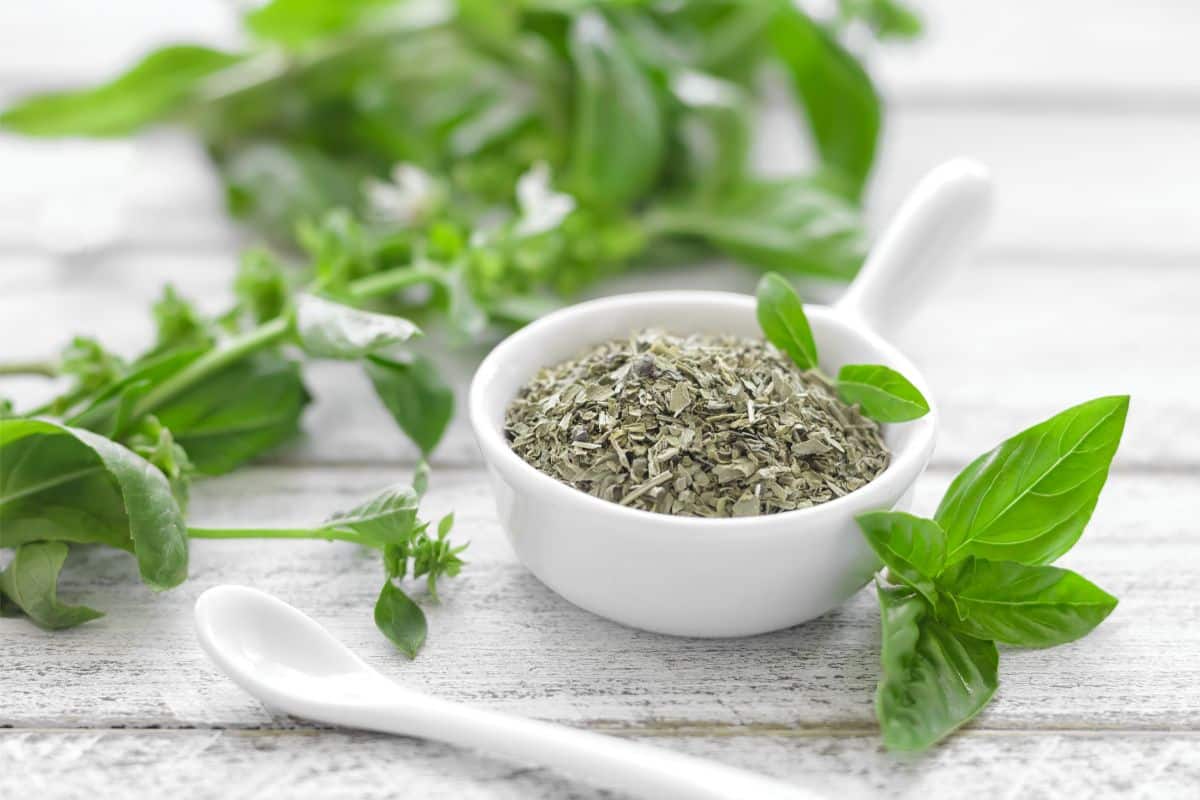
To dry fresh basil, you can either use a food dehydrator or put it in the oven at low heat. However, if you want to dry a bunch of fresh basil, you can tie it with kitchen twine and hang it upside down for a few days.
This is a longer method, as it will take several days until it dries completely.
Substitutions For Dried Basil
You can always substitute for different herbs if you can’t use fresh or dried basil. While dry basil is perfect as a seasoning, it is not the most suitable option for all meals. We recommend using this selection of herbs.
However, we should note that you should only add a little at a time when substituting your herbs. By adding a small amount at a time, you can taste test as you cook, allowing you to adjust the recipe as you see fit.
Parsley
If you’re substituting for a garnish, we recommend using parsley. Both parsley and basil have similar leaves, with both being reasonably large in size.
While it may have milder flavors and doesn’t have as many as basil, that doesn’t prevent it from being a good addition to your dish.
Mint
If you want a closer relative to basil in your dish, we recommend using mint as a garnish. Much like basil, it resembles and shares the minty flavor that it is known for. While it may not be suitable as a replacement for the main ingredient, it is still suitable for seasoning.
Bay Leaves
Bay leaves are an excellent replacement for basil when you need to make any sauce, stew, or soup that requires basil. However, we recommend not replacing your basil with the same amount of bay leaves.
You should add a small quantity compared to the recipe, as basil has an overpowering flavor when you use too much of it.
Sage
Sage is also an excellent substitute for basil, especially when you need to use it for a poultry dish. You should begin with a small quantity and add more as you taste test. Keep adding sage until you’ve tasted an amount with which you have tasted it.
Oregano
You can also use oregano and basil as a substitution for each other. However, you should remember that despite their similar peppery taste, they have different flavor profiles.
If you replace basil with oregano, you should ensure that you understand that it won’t taste the same.
How To Store Basil
When storing basil, you should consider what type of basil you’re storing and how long you would like to keep it. However, it also depends on the type of basil you want to use.
Short-Term Basil Storage
If you have a live basil bunch, we recommend storing it at room temperature and placing it in water as though you were leaving flowers in a vase. Ideally, you should leave the basil bunch for roughly two weeks, but what if you want to store it for longer?
Long-Term Basil Storage
If you want to keep basil for long-term use, we suggest you freeze it. You can freeze your basil whole or chop it up first. Earlier, we discussed what you should do if you have whole plants of basil, but what if you have chopped basil?
The procedure for chopped basil is a little bit different. To freeze your chopped basil, you need to place a little bit in ice cube molds. Then, fill the remaining space with water.
However, this is an option only if you prefer to freeze them in cubes and leave them in the freezer.
Basil Measurements
When using basil, it’s good to know how much it will weigh and how equal it will be when you swap the two variants around. So first, let’s talk about how you can measure fresh basil and how many grams you can expect in a single leaf.
Before you measure your basil, you need to remove the leaves from the stems and throw the stems away. It doesn’t matter if you measure the leaves as whole loose leaves or if you lightly pack them first.
You could even finely chop them first, then firmly pack them.
Depending on how you weigh them, you’ll find that different recipes prefer grams or ounces. In this section, we’ll discuss the differences between these weights so you can better understand how to measure them depending on the recipe you use.
Let’s say you’re measuring a pound of basil leaves, and they weigh 16 ounces; this is the same as weighing 453.59 grams. Meanwhile, 5 leaves would be 2.5 grams or .088 ounces.
2 Tablespoons of chopped leaves would be 5.3 grams, while this would be equivalent to 19 ounces. ¼ of a cup of whole leaves would then be 6.0 grams, while it would be equal to .21 ounces.
Of course, you might not want to convert them to ounces or grams. As you can see, it can be a little complicated. Sometimes, it’s easier to simplify the measurements by switching them to tablespoons or cups.
Simplifying Measurements
You can easily simplify the measurements from grams by substituting them with tablespoons and cups. For example, 20 grams of fresh basil would be the equivalent of 15.9 tablespoons, and 25 grams would be the same as 20 tablespoons.
However, 100 grams of basil are the same as roughly 5 cups of basil, and 50 grams are half of that with 2 ½ cups. Some measurements may use different descriptions, however, as they may describe basil in bunches and sprigs.
Bunches And Sprigs
A bunch of basil will have 60 sprigs, which is the same as 1 cup of packed basil or 2 cups that have been loosely packed. You can usually find 2.5 ounces in a bunch. A sprig would be cut from the top of the stem and is roughly 3 inches long.
Depending on the cut, you would find 3 or 4 leaves in one sprig. To help you understand how much a sprig is when compared to dried basil, this would be the same as having 1⁄2 a teaspoon.
Substituting Dried Herbs For Fresh
When you substitute any dried herbs for fresh ones, you need to consider the concentrated flavor. All dried herbs are stronger than fresh herbs as they have less water, so it doesn’t matter what kind of dried herb you use; it will always be stronger.
If a recipe calls for fresh herbs, you should calculate how many dried herbs you use based on the 3:1 ratio that we discussed earlier.
The Benefits Of Eating Basil
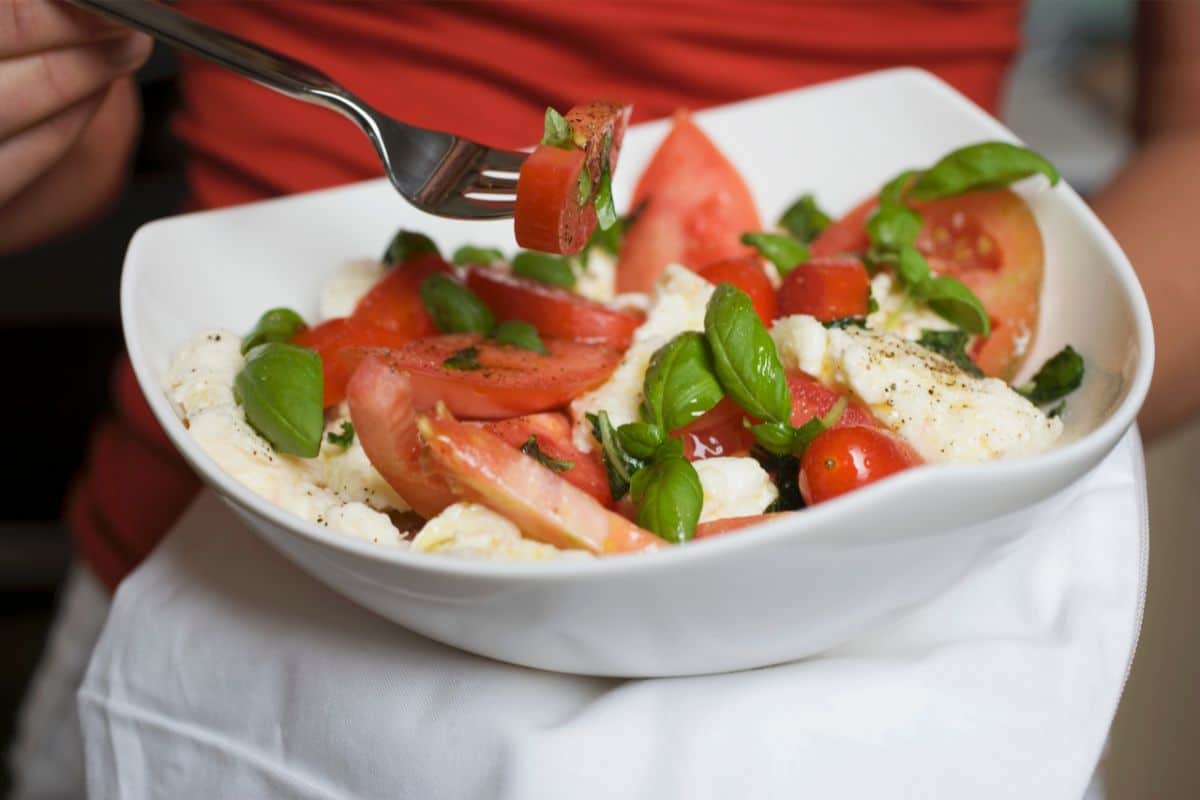
Basil can be great for aiding digestion and clearing up your skin and is also a healthy food that can help improve your mental health. There are a lot of benefits for your mental health by eating the right foods.
Basil is known to battle oxidative stress and can also aid anyone who may have physical symptoms of depression.
This herb is full of antioxidants and is known to have antibacterial properties, and is known to detoxify your body. It is also helpful for those who struggle with diabetes and have heart conditions, so you can always add it to your dish to help improve your health.
What Can You Use Basil For?
If you want to add basil to your cooking, there are a number of healthy ways you can use it. For example, basil is an excellent garnish, and you can add whole leaves to a pizza to add more flavor.
If you finely chop the leaves, you can add them to pasta and blend them into sauces or puree it into different soups. Chopped basil is also a fine addition to any salad; you could even use it to add to tea.
You may even be surprised that it can be added to vanilla ice cream, so you can always experiment with different recipes.
Due to how versatile basil is, you’ll find a wide range of dishes to which it can add flavor. However, it also depends on the type of basil you use. Not all types of basil are made equal, so you should find the right variety that will suit your dish best.
How To Prepare Basil For Eating
We agree that basil is best enjoyed fresh, which is why many people choose to grow their own basil at home. It is best grown in July and August, but you can also buy potted basil in stores.
Naturally, you can also freeze and dry it, but if you want to enjoy basil, you can prepare it by picking fresh leaves from the stalks and scattering them whole over your dishes.
When you cook basil, you should pound it with a mortar and pestle, or you can put it in a food processor with a mixture of garlic, parmesan, pine nuts, and parmesan to make your own homemade pesto.
It’s an excellent addition to tomato sauces for pasta, and it’s also known for being a key ingredient in a Caprese salad. There is a reason basil is so popular in Mediterranean dishes.
You can also use basil to beat into soft butter, which you can then melt over steak dishes. It’s a versatile herb, so don’t hesitate to add it to your next recipe.
Eating Raw Basil
You don’t have to cook basil to enjoy it; you can eat raw basil leaves. Naturally, all foods should be eaten in moderation, and basil is one of them. So long as you clean your basil before you eat them, you can add them to any salad, such as a Caprese salad.
We should note that when you add basil to any dish, it should be the last ingredient you add. If you add basil leaves last, you’ll find that they will add more flavor to your dish.
Three Ways To Preserve Basil
If you want to preserve your basil leaves to use them in the future, we recommend these three methods to ensure the best results.
You can freeze your basil leaves whole, and that way, you can use them in the same way you would use fresh leaves. However, your leaves will shrink as you freeze them, so it’s best to use less than you would when cooking with fresh leaves.
You can also puree and freeze your basil so you can add it to a vinaigrette or pesto with ease. Remove the leaves from your stem as you would, thoroughly wash and dry them, then put them in a food processor with a tablespoon of olive oil for each cup.
Once you do this, store your puree in an ice cube tray and a freezer-safe container.
Our third method is dried basil. Drying the basil will allow you to make your own spice for garnish, and it’s easiest to do this by oven-drying it. We discussed this method earlier, so please go back to our section on how to dry basil.
How To Get Basil
There are two ways you can get basil. You can buy it from your local grocery store or grow it yourself at home. If you want to grow your own basil, the good news is that it’s incredibly easy to grow.
However, most growers of basil don’t seed it in the soil itself but transplant starter plants. So, if you have bought fresh basil from a grocery store in a pot, you could transplant it into your garden.
When you grow basil, you should ensure it gets 6 to 8 hours of sunlight but also grows well in partial sunlight. Many people grow basil indoors in a nursery.
All you need to do is ensure it’s in fertile soil and that the temperature is consistently around 50°F or higher. Due to the temperature, you’ll find that this is why it’s commonly found during the summer months of July and August.
You should always ensure that your basil gets plenty of moisture, especially when you live in a hot area. However, you shouldn’t plant them if you expect the weather to get cold, as your basil will be destroyed in this case.
It should take 6 to 8 weeks for your basil to grow, and once the stem is between 6 to 8 inches, you can harvest it. The harvest is best done in the morning as the leaves are juiciest then, and if you pick the leaves regularly, more will go through the summer months.
Final Thoughts
Basil is a delicious culinary herb that you can use for a wide variety of dishes. However, it’s essential that you know the measurements needed to use it.
We recommend the 3:1 ratio conversion, as the taste of dry basil is stronger and more condensed than fresh basil. However, if you don’t want to dry basil, you can also freeze it to keep your basil for longer.
We hope this article has helped you understand how you can use basil in your dishes and how much you need for your recipe. If you want more information, please consider reviewing our other articles.
Frequently Asked Questions
If you have dried basil, it makes an excellent substitute for fresh basil. However, due to the concentrated flavor, you should use less dried basil than what the recipe calls for.
Dried herbs work best when you add them during the cooking process so the flavor has time to infuse with the whole dish. If they are added too late, they may taste dusty.
Dried herbs are dried and usually crushed, so they have a more concentrated flavor. This makes them more potent than fresh basil, which has a higher water content.



